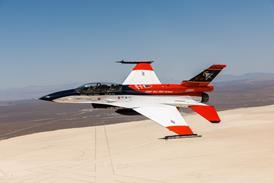Air New Zealand (ANZ) will inspect its entire fleet of 15 Boeing 737-300 aircraft for fatigue cracks while Qantas Airways will inspect four 737-400 aircraft from its fleet of 21 aircraft, following requirements on inspections issued by the FAA and Boeing.
The airlines do not expect any service disruptions from the inspections, which were called for after the 1 April fuselage rupture incident on board a Southwest Airlines 737-300.
Qantas says it plans to inspect its aircraft within 10 days while ANZ says it will inspect its single high-cycle aircraft within five days and its remaining aircraft within 20 days. Neither carrier has grounded aircraft.
A US FAA airworthiness directive has instructed 737-300/400/500 aircraft operators to carry out a three-tiered inspection regime based on the number of cycles accumulated. The directive was issued following a five-foot long hole opening along the lap joint of a 39,781-cycle Southwest 737-300 aircraft last Friday.
The 15 ANZ 737-300 aircraft and four Qantas 737-400 aircraft have line numbers between 2553 and 3132, a range Boeing identifies in a service bulletin as having the same lap-joint design and other characteristics as the holed Southwest aircraft.
The FAA requires aircraft in that range with over 35,000 cycles to be inspected within five days of receiving the directive. Flightglobal's ACAS database shows ANZ has one such aircraft, which the carriers says it will inspect within the compliance timeframe.
Aircraft with affected line numbers and 30,000-35,000 cycles must be inspected within 20 days. A Qantas spokeswoman says one of its 737-400 aircraft fits this criteria. Three ANZ 737-300 aircraft fit this criteria, according to Flightglobal's ACAS database.
Finally, affected aircraft with fewer than 30,000 cycles must be inspected within 20 days or before they reach 30,000 cycles, whichever occurs later. ANZ's remaining 11 737-300 aircraft and three Qantas 737-400 aircraft fit this criteria.
The FAA and Boeing's service bulletin require inspection of the lower row of fasteners in the lap-joint along the left and right-hand side of the crown of the aircraft at stringers S-4R and S-4L between the 50 foot-long length from body station 360 to 908.
Source: Air Transport Intelligence news
















